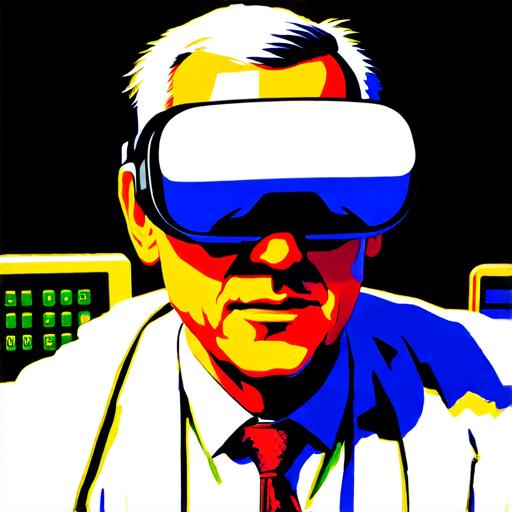Origins of Virtual Reality
Virtual reality can be traced back to the 1960s, when researchers at MIT and Stanford University were experimenting with immersive environments. One of the earliest examples of virtual reality was the “Sword of Damocles,” created by Ivan Sutherland in 1968.
In the 1970s and 1980s, virtual reality technology began to advance rapidly, with the development of computer graphics and more powerful hardware. One of the most influential figures in the early days of VR was Jaron Lanier, who coined the term “virtual reality” in 1983.
In the following decades, virtual reality continued to evolve, with companies like Oculus, HTC, and Samsung releasing their own VR headsets. These devices allowed users to enter fully immersive environments and interact with virtual objects in a way that was previously impossible.
Creators of Virtual Reality
There have been many individuals and companies who have made significant contributions to the development of virtual reality. One of the most influential figures in VR is Steve Jobs, who famously said, “The future of computing is not about computers but about experiences.” Jobs’ vision for the future of technology heavily influenced the development of virtual reality, as he believed that immersive environments would be a key component of future computing.
Another pioneer in VR is John Carmack, the co-founder of id Software and the creator of the Doom and Wolfenstein series. In 1992, Carmack created the first virtual reality game, called “MegaVR,” which was designed specifically for use with the Sword of Damocles.
In recent years, companies like Oculus have emerged as leaders in the VR industry, with their flagship product, the Oculus Quest 2, becoming one of the most popular VR headsets on the market. Other companies like HTC, Samsung, and Sony have also released their own VR headsets, with each offering its own unique features and experiences.
Evolution of Virtual Reality
Over the years, virtual reality technology has continued to evolve, with advancements in computer graphics, hardware, and software making it possible for users to experience more immersive and realistic environments. One of the most significant developments in VR has been the introduction of hand tracking, which allows users to interact with virtual objects using their hands.
Another key development has been the integration of artificial intelligence (AI) into VR experiences. AI can be used to create more dynamic and interactive environments, as well as to enhance the overall realism of the experience.
In addition to advancements in technology, virtual reality is also being used for a wide range of applications beyond gaming. For example, it’s being used in healthcare to help doctors train for surgeries, in education to create more interactive and engaging learning experiences, and in tourism to allow people to explore distant lands without leaving their homes.
FAQs
Q: What is virtual reality?
Virtual reality is a computer-generated simulation of a 3D environment that can be experienced through the use of specialized headsets or other devices.
Q: Who invented virtual reality?
Ivan Sutherland is often credited with inventing virtual reality, although there have been many others who have made significant contributions to its development over the years.
Q: What are some popular VR headsets on the market?
Some of the most popular VR headsets on the market include the Oculus Quest 2, HTC Vive Pro Eye, and PlayStation VR.

Q: What are some applications of virtual reality beyond gaming?
Virtual reality is being used in a wide range of applications beyond gaming, including healthcare, education, and tourism.
Summary
Virtual reality has come a long way since its inception, with pioneers and innovators pushing the boundaries of what is possible. From its origins to its creators and how it has evolved over time, virtual reality continues to be an exciting and rapidly evolving field. With advancements in computer graphics, hardware, and software, as well as the integration of artificial intelligence, the future of virtual reality looks bright. Whether you’re a gamer or a developer, there’s no doubt that virtual reality is an technology that will continue to captivate and inspire for years to come.
